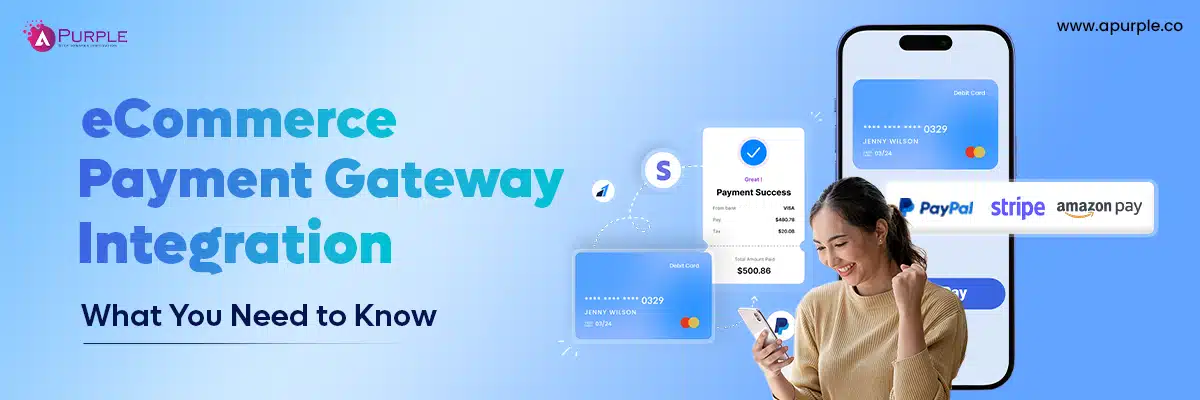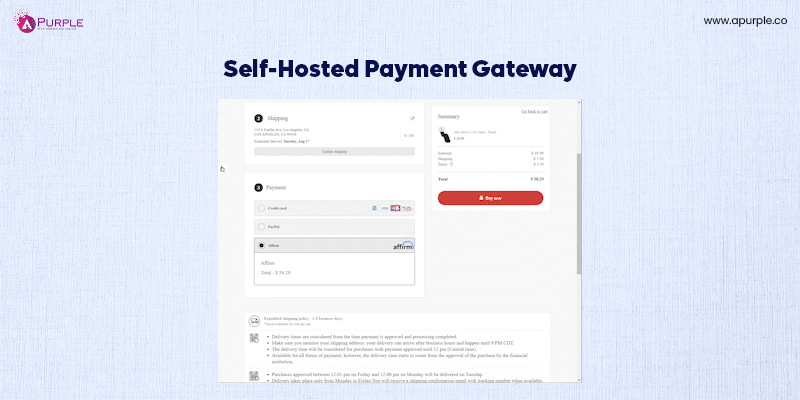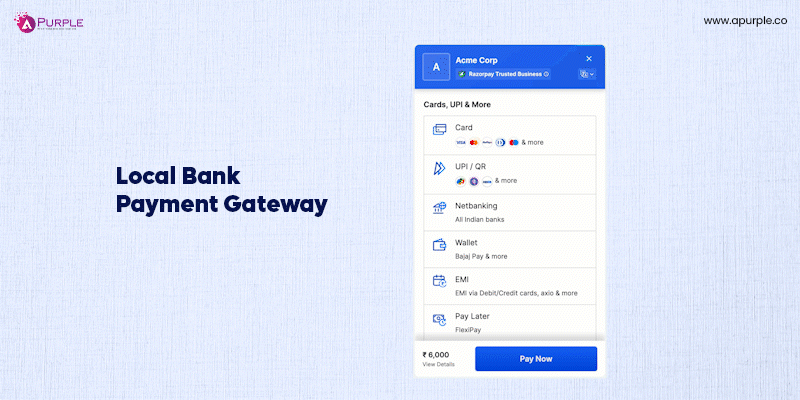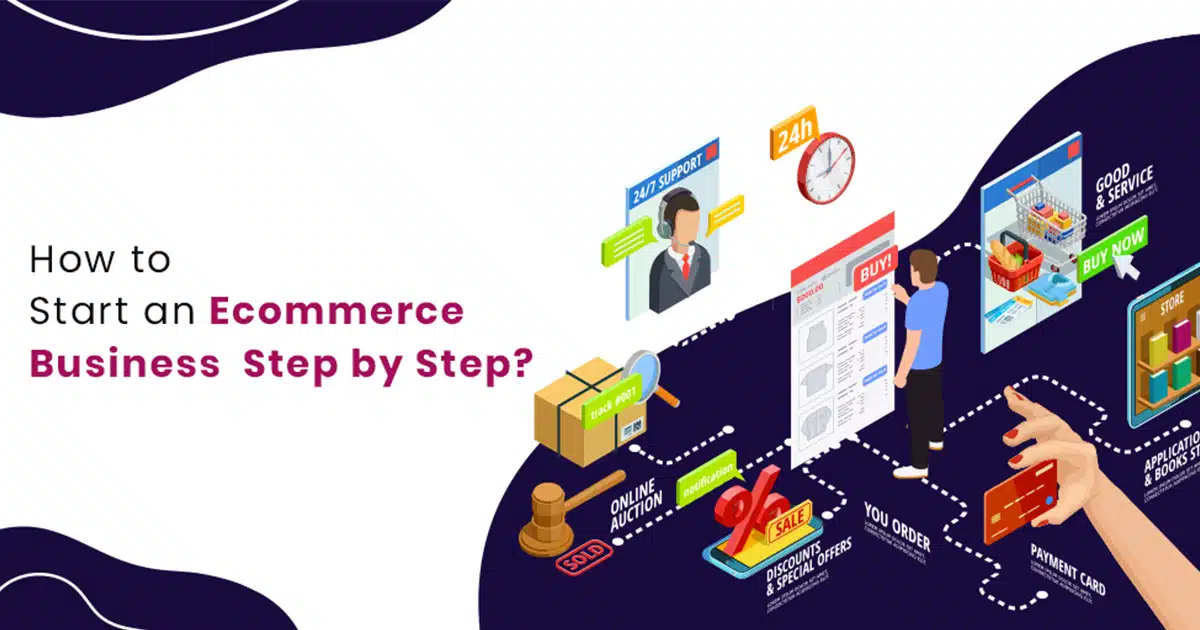
Insider Thought – Want to expand the global reach of your eCommerce platform? But are you stuck choosing the right payment gateway which supports multiple currencies and local payments? Or are you worried about decreasing sales? The answers to your question are stated in this blog.
Are you planning to conquer the global market of e-commerce by launching it worldwide?
However, to achieve this, your eCommerce payment gateway integration is the most significant approach to cornerstone success.
According to Statistica, the revenue of the eCommerce market is projected to reach US $4,117.00bn in 2024. The annual growth rate (CAGR 2024-2029) is 9.49%, resulting in a projected market volume of US$6,478.00bn by 2029.
A seamless payment gateway for any eCommerce platform turns your acquired customer into a retained customer. So, don’t let the payment gateway integration be an excuse for your business growth.
In our comprehensive eCommerce payment gateway integration guide, you will explore the crux of choosing the right payment gateway or how it will work for your eCommerce website development to increase sales.
What is eCommerce Payment Gateway Integration?
Payment gateway integration helps E-commerce app development platforms to accept digital payments from customers by just tapping a few clicks. The payment gateway in e-commerce sites conducts secure and efficient payments globally. In other words, this is a bridge between a customer’s and a merchant’s bank account.
An online payment gateway integration should adhere to security factors. For that, you should use PCI DSS (Payment Card Industry Data Security Standards), which ensures the user’s information is encrypted and transmitted safely.
Furthermore, providing various payment options such as offering debit cards, credit cards, digital wallets, Buy Now Pay Later (BNPL), or cash payments, will increase the conversion rate.
How to Integrate a Payment Gateway into an eCommerce Website?
To play on the front line in the e-commerce industry, having robust payment integration is the pillar of business success as it affects customer experience, conversion rate, or brand loyalty. We bring the eCommerce payment gateway integration process to keep your business in payment integration.
1. Requirement Analysis
Requirement analysis is the foundation of any eCommerce website while integrating payment gateway. The duration of analyzing basic and advanced requirements is estimated to be one to four weeks. To make this step successful, you need to analyze the requirements for payment gateway integration.
1. Understanding customers’ payment preferences, debit cards, credit cards, digital wallets, or cash.
2. Keep ensuring the security standards of your payment gateway integration in eCommerce with PCI DSS (Payment Card Industry Data Security Standards) to protect your users’ sensitive information.
3. Check the availability of payment gateway API integration for your eCommerce platforms such as stripe API, amazon API, Braintree API, stripe SDK, amazon SKD, or Braintree SDK.
4. Analyze the demographic factors such as age, gender, income level, and your customers’ buying pattern.
5. Create a region or country specific payment gateway. Here are some of the most preferred payment methods of the most popular countries.
- India – Unified Payment Interface (UPI), E-Wallets, or Cash on Delivery (COD).
- Dubai – CashU Wallet or Apple Pay.
- United Kingdom – Cash or Contactless Payments
- United States – Credit Cards and Debit Cards
- Saudi Arabia – Debit Cards
- Singapore – Cards or GrabPay
- South Africa – Local Cards(I.e Union Pay 0r Secure Pay)
- Australia – Debit Cards And Online Payment (i.e., Paypal, Google Pay, Or Klarna)
- Netherlands – Ideal And Debit Cards
- Denmark – Dankort And Mobile Pay
2. Project Planning
Effective planning will decide whether your business will succeed or fail. After an in-depth analysis, the next step is to plan the integration of the project’s e-commerce payment gateway. The average time required to prepare a breathtaking project is up to one week. The project planning consists of essential sub-stages such as
1. Making Roadmap
Creating a roadmap with achievable goals will assist you in designing your payment gateway, developing it, and launching it systematically.
2. Budgeting
Every business owner must put their money in the right place. The milestones you prepare will also help you to maintain your budget and resources.
3. Risk Mitigation
Analyzing the risk in the payment gateway integration process for eCommerce is crucial. You can face technical challenges in your eCommerce platform, such as conflict between API and existing system architecture or delays in payment transactions due to network latency.
3. Design of Payment Gateway Integration
Designing is an intuitive part of every software product development, especially if you plan to start an eCommerce business. The user journey will be seamless right from browsing a product to adding it to a cart to choosing their payment method. The design for the eCommerce payment gateway integration includes the selection of an adequate kind of payment gateway (hosted, direct, or self-hosted).
Furthermore, there is much to discuss regarding the best e-commerce payment gateway integration design.
1. Systematic Architecture Design
This defines the connection of the payment gateway with your eCommerce platform by using RESTful APIs, webhooks, and secure data protocols. This also ensures the implementation of encryption, tokenization, and secure data access to protect confidential data.
2. Diverse Range of Payment Method
The design requirements for eCommerce payment gateway integration include supporting various payment methods such as credit/debit cards, digital wallets, unified payment interface (UPI), or bank transfers.
3. Multi-Currency Option
Integrating multiple currency options for ordering products from your eCommerce platform.
4. Selecting the Optimal Tech Stack
A technology stack is a blend of applications, frameworks, and technology. Optimizing the correct tech stack in your eCommerce platform is a prerequisite because it is liable for perfect, reliable, and efficient payment processing and conversion rates for users. In addition, the expert developers take the time to integrate a proper tech stack in 1-7 weeks. The selection of a tech stack for your eCommerce payment gateway integration must be easy if you read the below section carefully.
1. Programming Languages
Opting for an ideal tech stack in your eCommerce site, first, you require adequate programming languages. The languages include Java, Python, and PHP.
2. Framework Integration
Another thing to consider when forming an easy payment gateway integration for eCommerce is framework incorporation. The framework consists of Magento, WooCommerce, Shopify, and Wix.
3. Performance Optimization
Performance regarding time loading, reliability, scalability, or security of every transaction. The performance optimization of the payment gateway integration process will give you a wholesome analysis of your user’s overall experience.
5. Implementation and Testing
Now, the most awaited part is the implementation of eCommerce payment gateway integration. Implementing and testing would be done in about 2-9 weeks. However, the duration may vary depending on if you’re implementing a custom payment integration service. It will take twice as long. Before execution, you need to set up a merchant account with a bank to accept customer payments.
6. Support and Maintenance
Choosing the correct payment gateway will take you to the next step, which includes support and maintenance for your custom eCommerce payment integration services. It identifies and resolves the issues in your eCommerce site which might arise after integrating the payment gateway. Also, it marks all the security protocols and safeguards against vulnerabilities.
Moreover, supporting and maintaining your payment gateway after the launch will help you analyze customer preferences and quickly accept new technologies to retain users.
How Does A Payment Gateway Work in eCommerce?
A payment gateway is a connection between a merchant bank and the user. The eCommerce integration with payment gateway is important because it seamlessly improves the transaction process. The payment gateway captures, verifies, secures, and communicates online card transactions. To understand about how to integrate payment gateway works then, this one’s for you –
1. Customer Initiates the Purchase
Initially, when a customer visits your eCommerce website, they will select the product that they want to purchase. After that, they click the buy now icon and go to the checkout page.
2. Customer Re-Directs to the Checkout Page
This page is crucial for the buyer. At this stage, they must enter their card details, if they use a unified payment interface (UPI), they must enter their respective information. For instance, if they choose to pay using a card, they must enter details like the cardholder’s name, card number, card expiry date, and card verification value (CVV) code. These details are cautiously transferred to the payment gateway.
3. Security Analysis by Selected Payment Gateway
When the details are transferred to the payment gateway, it encrypts the information and then investigates fraud checks.
4. Authorization Request
When the payment gateway analyzes every detail, it re-sends it to the merchant’s acquiring bank for authorization. It includes verifying the customer’s card details.
5. Card Network Verification
This step confirms whether enough funds are available on the customer’s card.
6. Transaction Approval or Decline
If the card details are correct and it has enough funds available in the bank, the payment gateway will approve the transaction. But, if there is any false detail or the customer does not have necessary y funds, it immediately declines the transaction or request.
7. Transaction of Payment
If the payment gateway is approved, the transaction will be successfully done from the customer’s account to the merchant’s. In addition, the payment gateway will ensure that when the payment is transferred, the respective parties get the transaction information.
4 Types of eCommerce Payment Gateway Integration
Integrating the best payment gateway depends on which type of gateway you integrate into your website. Some require regular maintenance and technical support. In contrast, others need direct support from the host.
1. Hosted Payment Gateway
A fully hosted website is the best option if you want to integrate a payment gateway in eCommerce. Another thing to consider in the hosted payment gateway is that the customers are redirected from the merchant’s website to a secure page hosted by the payment service provider (PSP) during the checkout process.
It helps eCommerce sites to provide various payment methods such as credit cards, debit cards, PayPal, or bank transfers.
2. Self-Hosted Payment Gateway
Self-hosted depicts the transaction data that is assembled on your eCommerce website. This payment gateway will help analyze the customer experience and checkout processes. In addition, the self-hosted payment gateway encrypted the details and submitted them to the third-party gateway for verification, such as Stripe or Shopify.
Moreover, it holds another benefit: a faster payment checkout because it does not redirect users from one website to another. Choosing a self-hosted payment gateway will be best suited if you’re a large enterprise or have high-volume transactions.
3. API-Hosted Gateways
API-hosted gateways are payment gateways that operate through the Application Program Interface (API). It is known for its customizable payment checkout and can be integrated into various systems, such as mobile.
But, with the payment gateway API integration, you must ensure security by investing in resources like the Secure Sockets Layer (SSL) certificate to protect sensitive data. An example of an API-hosted gateway is Razorpay because it provides customization and a diverse range of integration needs for websites or mobile applications.
4. Local Bank Integration
Local bank payment integration directly connects users with a specific country or region. It is slightly different from the types mentioned earlier because, in this way, customers are automatically transferred to the local bank site for further payment processing.
Local bank payment integration e builds the trust and familiarity of local users. Integrating a payment gateway with the local bank will be the best option if you plan to start a local application.
List of Top Local Payment Gateways Country Wise
- Top Payment Gateways in India
1. RazorPay
The first one to hit the list of top payment gateways in India is RazorPay. It provides the full set of payment solutions, from payment gateway services to processing transactions safely.
2. Cashfree
Cashfree is one of the most cost-effective payment gateway integration services, and it features a user-friendly interface.
3. PayU
PayU allows businesses to accept and process payments. It can gather payments online across 150+ payment methods such as Credit Cards, Debit Cards, Net Banking, or (Electronic Money Institution) EMIs. The transaction fee they charge is around 2% + GST on every transaction.
4. Paytm
Paytm is a bridge between the customer and merchant for payment transactions. It allows users to pay through various methods such as (Quick Response) QR code, Soundbox, Android-based payment terminal, and online payment gateway.
5. PayPal
PayPal prevents fraud and also protects the sensitive information of senders and receivers. It allows you to pay from a bank account instead of a credit card to keep your payment details hidden from respective merchants.
- Top Payment Gateways in the USA
1. Stripe
Over 120 countries trust Stripe. It provides services for both brick-and-mortar and online businesses.
2. Authorize.Net
Authorize.Net is reliable for over 430,000 merchants and handles over 1 billion transactions. It is a wholly-owned subsidiary of Visa. Authorize.Net is designed for server-to-server connections, allowing your software to submit transactions directly.
3. Adyen
Adyen is cost-effective, and it doesn’t have any monthly fees. This is a desired option to scale up your business internationally. It provides gateway, risk management, and front-end processing services to eCommerce businesses.
4. Square
Square is a top choice in the payment landscape because it yields its user-friendly interface, adaptable payment options, robust security techniques, and transparent pricing.
5. Braintree
PayPal owns Braintree, but these two are very different in functionality. It delivers tools for accepting credit and debit cards or Apple Pay. Plus, Braintree offers advanced features like fraud protection and recurring billing.
- Top Payment Gateways in Saudi Arabia
1. PayTabs
PayTabs are the gateways facilitating payment for startups, SMEs, entrepreneurs, and super merchants. It supports various currencies, which helps your eCommerce business scale up internationally.
2. HyperPay
HyperPay is famous for its versatility because it deals in in-person and online transactions. This includes advanced features like easier integration, elevated acceptance rates, or security measures for every transaction.
3. Moyasar
If your business targets both local and international markets, then integrating Moyasar would be a good idea. Moyasar is one of the developers’ favorite payment gateways because it integrates quickly without any hassles.
4. Checkout.com
Checkout.com provides customization payment services in over 150 currencies. This payment gateway also gives advanced analytics reports for better performance and user experience.
5. 2Checkout
2Checkout is a payment gateway integration that welcomes businesses of every size to receive online payments worldwide securely. Additionally, it also supports 85 currencies in 200 countries.
- Top Payment Gateways in Australia
1. Eway
Eway is an international omnichannel payment provider. It is Australia’s most used payment gateway, and it helps users with its security features.
2. Pin Payments
Pin payments mainly offer services to businesses purely operating in the Australian market. However, Pin Payments sets a single and simple account for both the payment gateway and merchant account.
3. WorldPay
WorldPay has an extensive global presence, which makes it more versatile. Another amazing fact about WorldPay is it provides multiple integration options such as rapid API, direct connection, and hosted checkouts.
4. Afterpay
Afterpay is the best eCommerce payment gateway integration, which offers a distinctive solution known as “buy now, pay later.” It has the feature of seamlessly integrating with Shopify, Magento, or WooCommerce.
5. Shopify
Shopify allows eCommerce businesses to operate online and in-person payments from an individual platform. Another catch of Shopify is its various sales channels, which means you can make payments through Facebook, Instagram, or Google.
- Top Payment Gateways in UAE
1. PayTabs
The most surprising thing about PayTabs is that they have built-in fraud protection. This involves the potential of assisting online-operated companies in receiving and making electronic purchases.
2. Telr Dubai
Telr from Dubai permits merchants to gather payments with the highest level of reliability in over 120 currencies and over 30 languages. Further, the merchants also grasp the perks of a purely automated reconciliation process.
3. CashU
CashU is one of the most used and preferred payment gateway integrations in eCommerce. Also, it does not ask for setup fees or a security deposit. It only charges annual fees, which fully depend on your sales volume.
4. CyberSource
CyberSource presently operates in over 190 countries. Meanwhile, it supports multiple payment methods, such as Apple Pay and Android Pay, as well as local wallets like AliPay.
- Top Payment Gateways in Canada
1. Braintree
Braintree is a middleman between customers, merchants, and financial institutions to ease payment transactions.
2. Stax
Stax can manage subscriptions and recurring payments. Also, Stax allows merchants to automate billing cycles and improve cash flows.
3. Stripe
The Stripe is Payment Card Industry Data Security Standard (PCI DSS) level 1 compliant, providing higher security to all merchants and customers.
4. Square
Square is one of the most feature-rich and progressive mobile point-of-sale (mPOS) solutions without fees. Likewise, it offers secure payment gateway API integration for eCommerce and in-person transactions.
5. Helcim
Helcim is an easy payment gateway integration that permits merchants to control every transaction without having any separate merchant account.
- Top Payment Gateways in the UK
1. GoCardless
Gocardless is a payment gateway that provides instant bank pay service on the same day. Also, it helps businesses to gather all transactions through Direct Debit.
2. Revolut
One of the fast payment gateway integrations in the United Kingdom is Revolut, a secure path for users to transact payments to respective businesses.
3. Klarna
Klarna is an omnichannel approach allowing users to pay both in-app and web payments through API (Application Programming Integration) integration.
4. Elavon
Elavon provides multiple payment method options to their users, such as credit card, debit card, eCheck, and Automated clearing house (ACH). Another thing to put eyes on Elavon is that it has the potential to generate 450 transactions per second.
5. Mollie
Mollie is known for its versatility, including online payments, subscriptions, financing, and reconciliation protection from fraud.
- Top Payment Gateways in Germany
1. CARDZ3N
Along with usual payment method options, CARDZ3N payment gateway integration also supports local payment methods for credit cards, such as
- Automated Clearing House (ACH)
- Single Euro Payments Area (SEPA)
- Crypto
- Buy Now Pay Later (BNPL)
2. BlueSnap
BlueSnap adheres to Level 1 of Payment Card Industry Data Security Standards (PCI DSS), the industry’s highest standards. Along with this, BlueSnap also protects from financial fraud and provides 3D secure support.
- Top Payment Gateways in Ireland
1. 2CheckOut
2CheckOut is one of the global payment gateway providers that deals with eCommerce, online payments, and subscription billing solutions, ultimately increasing the holder’s revenues.
2. Opayo
In Opayo, tokenization is used for every successful transaction. In addition, Opayo allows merchants to view every transaction with refunds and chargebacks with the help of one centralized dashboard.
3. Rapyd Payments
The catch of Rapyd payments is that it is a unified platform that provides APIs and no-code solutions, which ultimately helps businesses grow locally and globally.
4. Stripe
More than 120+ countries trust Stripe because it offers the security of fraud detection, which is necessary in every financial transaction.
- Top Payment Gateways in France
1. Adyen
Adyen is the best choice if you plan to expand your business globally. Firstly, it does not ask for fees and is reasonably priced.
2. PayPal
Using PayPal, you can send and receive money. It prevents every information of senders and receivers to secure it from any vulnerabilities.
3. PayPlug
PayPlug is a payment gateway that allows merchants to accept payment via Visa, MasterCard, and CB (Bank Cards) cards.
4. Stripe
Stripe can accept different types of mobile platforms such as iOS and SDK, mobile customer interface, mobile web, and dashboard mobile apps. Moreover, it supports third-party integrations such as 24*7 email, chat, and phone support.
5. Worldline
Worldline is connected with over 200 domestic and international acquisitions. Similarly, it has advanced features like real-time banking, reporting, and analytics.
- Global Payment Gateways
The list of payment gateway integration services is a never-ending topic. If you’re from Spain, Sweden, or somewhere else, here is the list of some global and the best eCommerce payment gateway integrations for you. Have a look at the list-
1. Payment Gateway for Spain
- PayPal
- Stripe
- Apple Pay
- Klarna
- American Express
2. Payment Gateway for Sweden
- Adyen
- Authorize.Net
- Braintree
- Square
- 2Checkout
3. Payment Gateway for Singapore
- Worldpay
- Eway
- Adyen
- PayMate
- Rapyd
4. Payment Gateway for Netherlands
- Klarna
- Afterpay
- Billink
How Much Does eCommerce Payment Gateway Integration Cost?
If you have a question about the eCommerce payment gateway integration services cost, we’ve thoroughly researched to provide the answer. When planning to integrate a payment gateway, the cost estimate for your eCommerce is $15,000 to $150,000. The prices might be affected for different reasons such as advanced features, security compliance, types of payment gateways (hosted, self-hosted, local bank, or API- hosted), the performance of the gateway, and many others.
Read also: eCommerce Application Development Cost – A Detailed Breakdown
Final Thoughts
We are concluding our exploration of eCommerce payment gateway integration, in which we’ve revealed how payment gateway works, analyzed various payment gateway types, and highlighted the top local options globally. For those venturing on their eCommerce journey, partnering with an experienced E-commerce development company can be essential to ensure seamless and successful integration.
So, don’t sit back because of the payment gateway challenges. aPurple has a track record of cracking every challenging task with the leading designers and developers teams. Connect with us today and see how we can transform your challenges into solutions.








